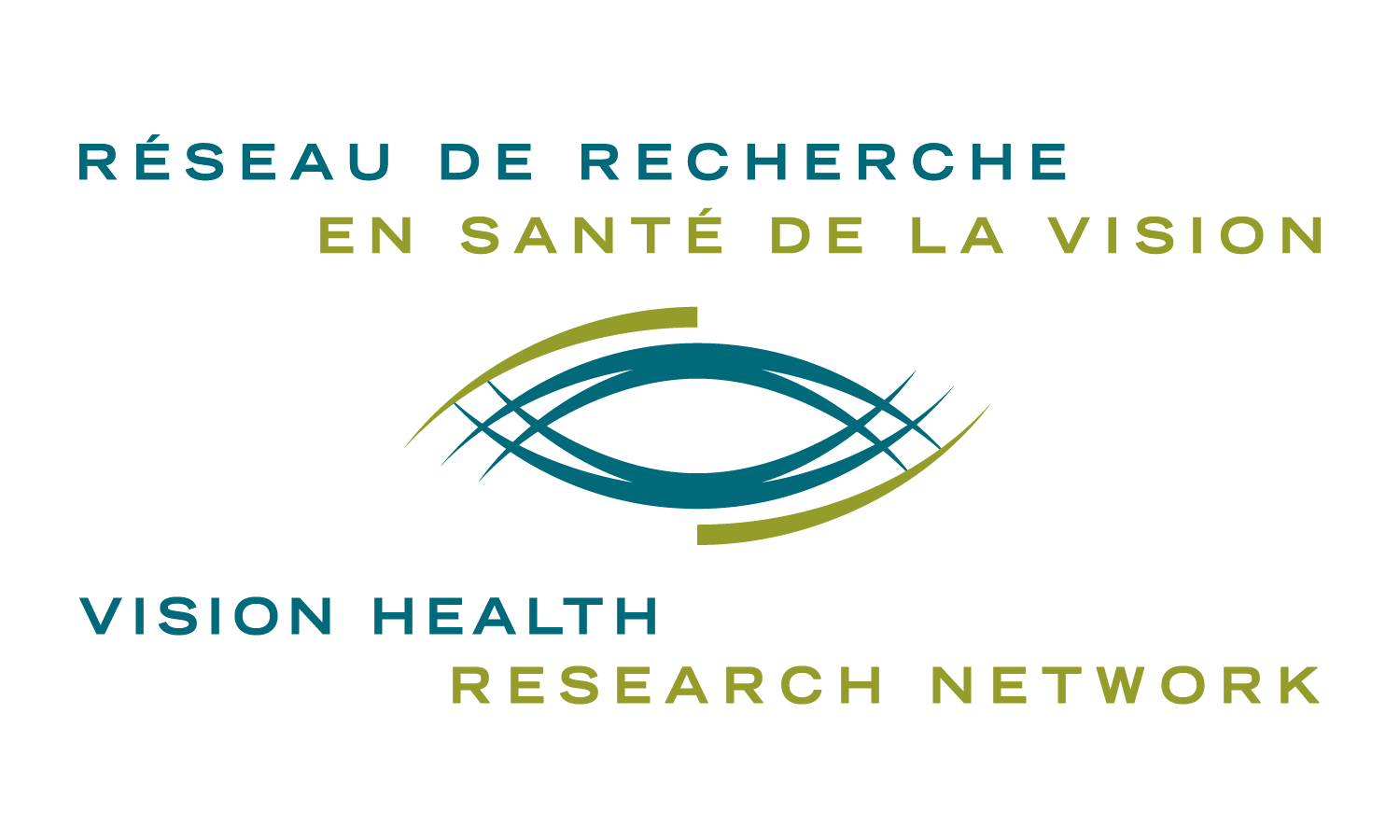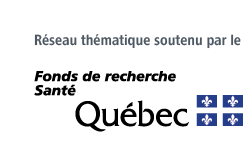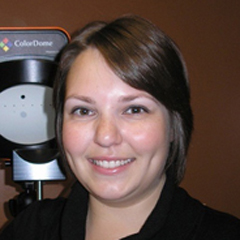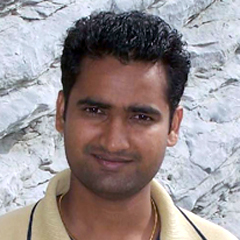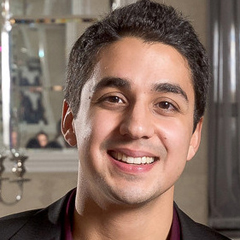Laureates of the 2012-2013 Vision network publication award
Joëlle Lavoie
PhD candidate, neurobiology, Université Laval
Laboratory: Dr Marc Hébert
Lavoie J, Illiano P, Sotnikova TD, Gainetdinov RR, Beaulieu JM, Hébert M. The Electroretinogram as a Biomarker of Central Dopamine and Serotonin: Potential Relevance to Psychiatric Disorders. Biol Psychiatry. 2013 Jan 7.
Joëlle Lavoie studied in medical biology at the Université du Québec à Trois-Rivières. In 2008, she began a Master degree in neurobiology at Laval University supervised by Marc Hébert and Martin Beaulieu and she transferred to a Ph.D. in 2009. Her researches focus on the electroretinogram (ERG) as a biomarker of psychiatric disorders. She studies the origins of the ERG anomalies reported in patients with psychiatric disorders and she works with patients and animal models. Joëlle is granted by research fellowships from the Fonds de recherche du Québec – Santé (FRQS) and the Centre de recherche sur le cerveau, le comportement et la neuropsychiatrie (CRCN). She presented her work in several scientific events and international conferences where she received many awards and distinctions from the Association for Research in Vision and Ophthalmology (ARVO), the International Society for Clinical Electrophysiology of Vision (ISCEV) and the Vision Research Network. In her work published in the prestigious journal Biological Psychiatry, she demonstrates that alterations in central dopamine and serotonin neurotransmission can affect the ERG parameters. The ERG anomalies reported in psychiatric disorders might serve as biomarkers of central monoaminergic dysfunctions thus promoting the ERG measurements as a useful tool in psychiatric research.
* * *
Kanawarpal Singh
PhD candidate, physics, Université de Montréal
Laboratory: Dr Mark Lesk and Dr Santiago Costantino
Singh K, Dion C, Godin AG, Lorghaba F, Descovich D, Wajszilber M, Ozaki T, Costantino S, Lesk MR. Pulsatile movement of the optic nerve head and the peripapillary retina in normal subjects and in glaucoma. Invest Ophthalmol Vis Sci. 2012 Nov 27;53(12):7819-24.
Mr. Singh holds a master degree in Laser science and applications from Devi Ahilya University, Indore (India). During his master degree he became familiar with the world of lasers and its use in biological sciences. He worked as an exchange student at ophthalmology department of Hôpital Maisonneuve-Rosemont for one year as a part of his master degree. The fascinating world of vision motivated him to pursue his PhD program in this field. To pursue his work, he received PhD scholarships from “Le Fonds québécois de la recherche sur la nature et les technologies” (2008-2009) and “Le Fonds de la recherche en santé du Québec” (2009-2012). He received the prestigious Innovation Challenge Award (2012) form Natural Sciences and Engineering Research Council of Canada (NSERC) for his contribution in the development of a machine for early diagnosis of glaucoma. He also received Incubic/Milton- Chang travel grant to present his work at Conference on Laser and Electro Optics. He won a travel grant from Ministère de l’Éducation, du Loisir et du Sport in 2009 to visit medical university of Vienna, Austria in order to perform experiments related to his work
* * *
Joseph Bouskila
PhD candidate, bio-medical sciences, Université de Montréal
Laboratory: Dr Maurice Ptito and Dr Jean-François Bouchard
Bouskila J, Burke MW, Zabouri N, Casanova C, Ptito M, Bouchard JF. Expression and localization of the cannabinoid receptor type 1 and the enzyme fatty acid amide hydrolase in the retina of vervet monkeys. Neuroscience. 2012 Jan 27;202:117-30.
Joseph Bouskila holds a bachelor degree in biomedical sciences and a master degree in visual sciences from University of Montreal. He is currently following a PhD degree in biomedical sciences in the laboratories of Drs. Maurice Ptito and Jean-François Bouchard. He is interested on the involvement of the endocannabinoid system in the monkey visual system. When he was an undergraduate student, he completed a fellowship in the laboratory of Dr. Christophe Faure. There, he learned various immunostaining techniques. His master thesis focused on the detection of key proteins of the monkey retinal endocannabinoid system; with his thesis entitled “Expression and localization of the endocannabinoid system in the retina of the monkey”. The aim of his doctoral thesis is to characterize the endocannabinoid signaling system in the central nervous system (CNS) with an emphasis on all visual structures, including the retina, lateral geniculate nucleus and primary visual cortex. For millennia, cannabis has been a drug of abuse that played a significant role in human history. The CB1 receptor is largely responsible for mediating the effects of cannabinoid binding in the brain and is one of the most widely highly expressed G protein coupled receptor throughout the CNS. It is involved in many brain functions such as learning, memory, and motor coordination. However, its role on vision and during visual system development is still unknown.
